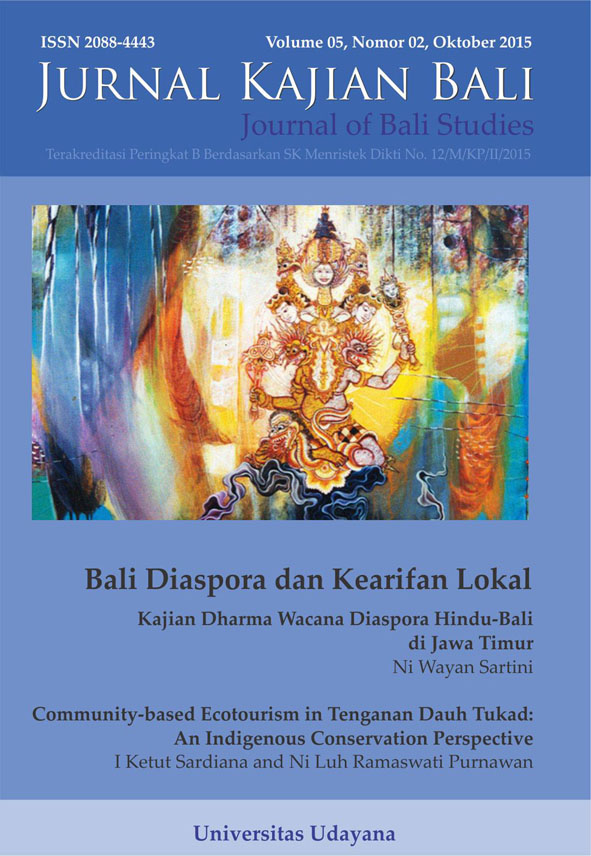Studi Etnobotanik Tanaman Upacara Hindu Bali sebagai Upaya Pelestarian Kearifan Lokal
Abstract
Abstract
Preservation the local wisdom of Balinese culture need to continue to do. To begin, the initial knowledge is needed that is able to answer the following questions: How does the local wisdom is obtained? How is this done during scanning to the younger generation? This article tries to answer the above questions with a focus on the study of local wisdom pertaining to ethnobotany of ceremonial plants on Balinese Hindu communities. Research using exploratory approach. Location of the study includes five Desa Pakraman (Balinese village) in the province of Bali. Inventory data is done through the analysis of documents, interviews, and observations. The resource person is determined by snow ball sampling techniques. Data analysis was done through qualitative critical. The results showed that ethnobotany documentation of Balinese Hindu ceremonial plant, still classified as minimal. Identification is done on the basis of morphological characteristics of the plant. Scanning of knowledge belonging to the younger generation to be done through oral techniques and provides hands-on experience through time of preparation, implementation, and post implementation activities of religious rituals. It takes an attempt of documenting through the media, so that available anytime, anywhere.
Downloads
Keywords

This work is licensed under a Creative Commons Attribution 4.0 International License.



















